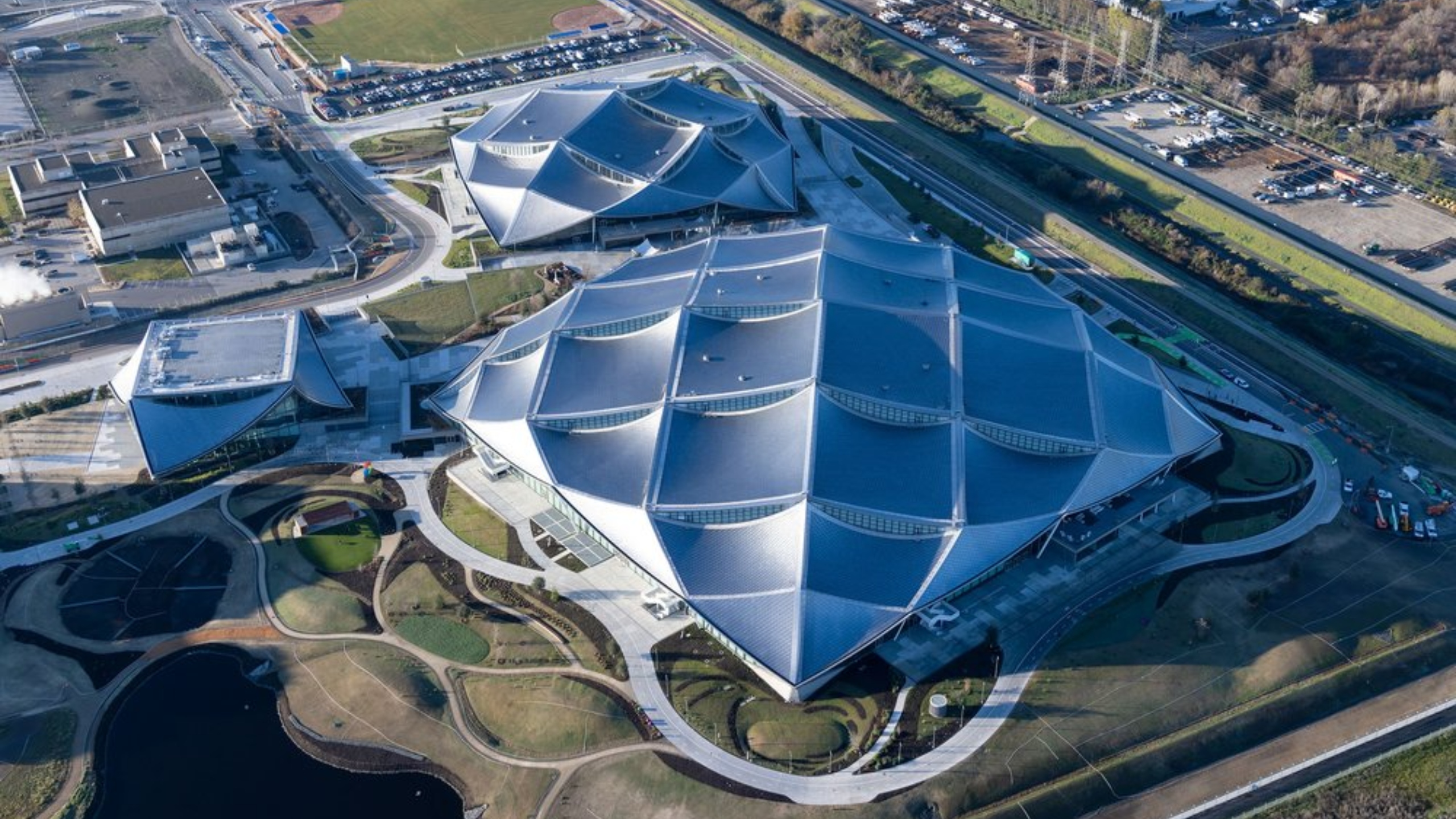
Google is opening the doors of its brand new Bay View HQ in Silicon Valley. Google first broke ground on its California-based headquarters in 2017. It’s also the first Google campus developed by the company.
The Bay View HQ is an “all-electric, net water positive campus” and is the largest geothermal installation in North America. The company’s in-house engineers and developers brainstormed what “Googlers” need from their workplace. The campus has space that buffers sound and spaces focusing on team-building as well. The upper floor of the campus is broken into small “neighbourhoods” separated by courtyards.
The Bay View campus integrates biophilic design principles like natural daylight and outdoor views. This is to help with the health and the wellbeing of staff. Clerestory windows also shine direct light onto desks when needed.
Typical offices use 20-30 percent outdoor air in their air system, ut Bay View HQ is comprised of 100 percent outside air. It also uses vetted and environmentally sound products across its carpets, tiles, paints, etc. Google uses Living Building Challenge Red List as a framework.
Google’s Artist In Residence program is using the work of local artists around the courtyard. Each piece of work relates to the Bay Area’s ecology and assists with navigation in the building.
The operations of the Bay View HQ build on Google’s commitment to being carbon-free by 2030. “We prioritized renewable energy and maximized the solar potential of our buildings,” the company says in a blog post. Google is also on track to have the campus be the largest project certified by the International Living Future Institute (ILFI). Additionally, it is targeting a Water Petal certification, meaning the site is net-positive with all non-potable water demands being met using the recycled water generated on-site. This work goes towards Google’s goal of replenishing 120 percent of the water the company consumes by 2030.
Finally, energy-conscious efforts made by Google include the Bay View HQs two kitchens serving seven cafes. Each is equipped with electric equipment. The campus includes 17.3 acres of high-value natural areas. Additionally, the water retention ponds provide nature restorations and sea-level rise protection.
Image credit: Google
MobileSyrup may earn a commission from purchases made via our links, which helps fund the journalism we provide free on our website. These links do not influence our editorial content. Support us here.


